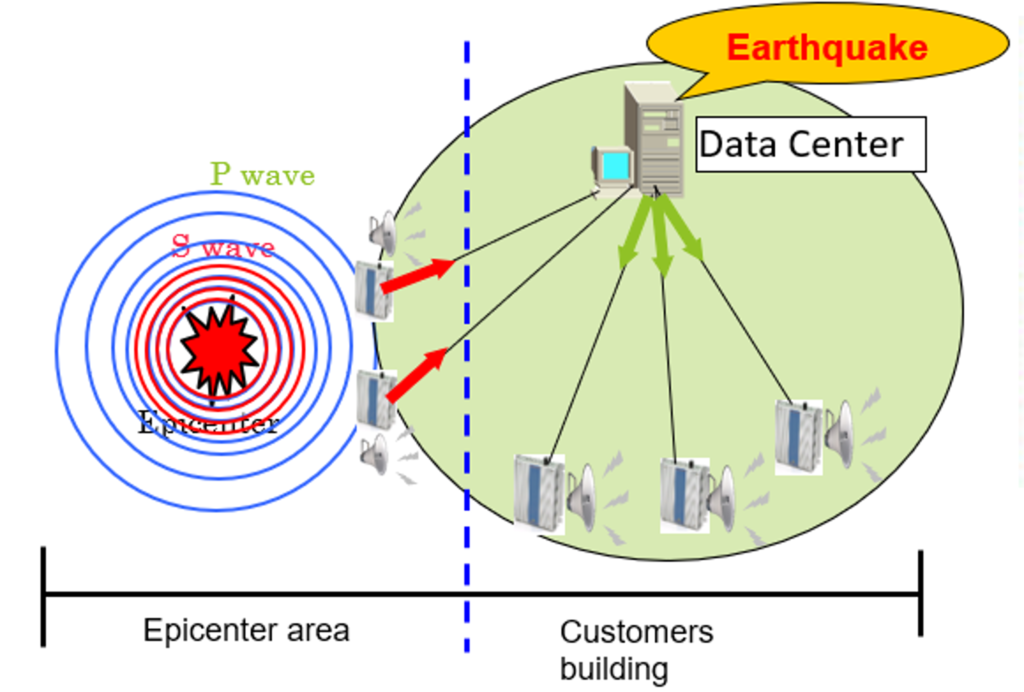
An earthquake alarm is a system designed to detect seismic activity and alert people before an earthquake strikes or during its early stages. These alarms are typically based on detecting the first, less destructive seismic waves (P-waves) that travel faster than the more damaging waves (S-waves and surface waves). Here’s a breakdown of how earthquake alarms work and their significance:
How Earthquake Alarms Work:
- Detection of Seismic Waves:
- Earthquake alarms rely on seismic sensors that can detect the initial seismic waves, called P-waves (Primary waves). These waves travel faster than the more destructive S-waves (Secondary waves) and surface waves.
- P-waves can be detected seconds before the S-waves and surface waves, which are responsible for the most damage.
- Alert System:
- When the seismic sensors detect P-waves, the alarm system sends an alert to the affected area.
- These alerts can be transmitted through various means such as sirens, text messages, phone apps, emails, and public announcement systems.
- The warning time can range from a few seconds to tens of seconds, depending on the proximity of the earthquake’s epicenter to the detection system.
- Types of Alerts:
- Early Warning Alerts: If an earthquake is detected far enough from the user, the warning may give people enough time to take protective actions (e.g., drop, cover, and hold on).
- Shaking Alerts: If the system detects an earthquake close to the area, the warning may only give a few seconds or no warning at all, but it can still help with early actions to minimize damage.
Benefits of Earthquake Alarms:
- Preparedness: Early warnings allow people to take protective measures such as stopping trains, halting surgeries in hospitals, shutting down machinery, and evacuating buildings.
- Safety: Gives people crucial seconds to drop, cover, and hold on, reducing injuries during the shaking.
- Infrastructure Protection: Alerts can help protect critical infrastructure (like power grids, gas lines, or transportation systems) by triggering automated safety protocols, like shutting off gas lines to prevent fires.
Example of Earthquake Alarm Systems:
- Japan’s Earthquake Early Warning System (EEWS):
- Japan is one of the leading countries with an earthquake alarm system, using seismic sensors along with a sophisticated warning network. The system provides a warning through various channels, such as TV, radio, and mobile phones.
- ShakeAlert (United States):
- In California and other parts of the U.S., the ShakeAlert system, developed by the U.S. Geological Survey (USGS), provides earthquake warnings for the West Coast. It uses a network of seismic stations to detect earthquakes and issue warnings seconds before the shaking starts.
Limitations:
- Short Warning Times: Earthquake alarms are most useful for large earthquakes that occur far from the affected area. In regions close to the epicenter, the warning time may be very short (a few seconds or none at all).
- False Alarms: In some cases, small tremors or aftershocks might trigger the alarm, but these are usually less dangerous and may not require evacuation or other immediate actions.
- Infrastructure Requirements: Building and maintaining earthquake alarm systems require significant infrastructure and investment.
Personal Earthquake Alarm Devices:
- Some companies also produce personal earthquake alarms in the form of apps or wearable devices that can alert individuals about nearby seismic activity. These devices are linked to local seismic monitoring systems and can give a personal early warning.
In summary: An earthquake alarm is a vital safety tool designed to provide advance warning of seismic activity, allowing people to take actions to minimize harm. While the warning time may be short, especially in highly seismic areas, these alarms can still save lives and reduce property damage by triggering automatic safety measures.

Leave a Reply